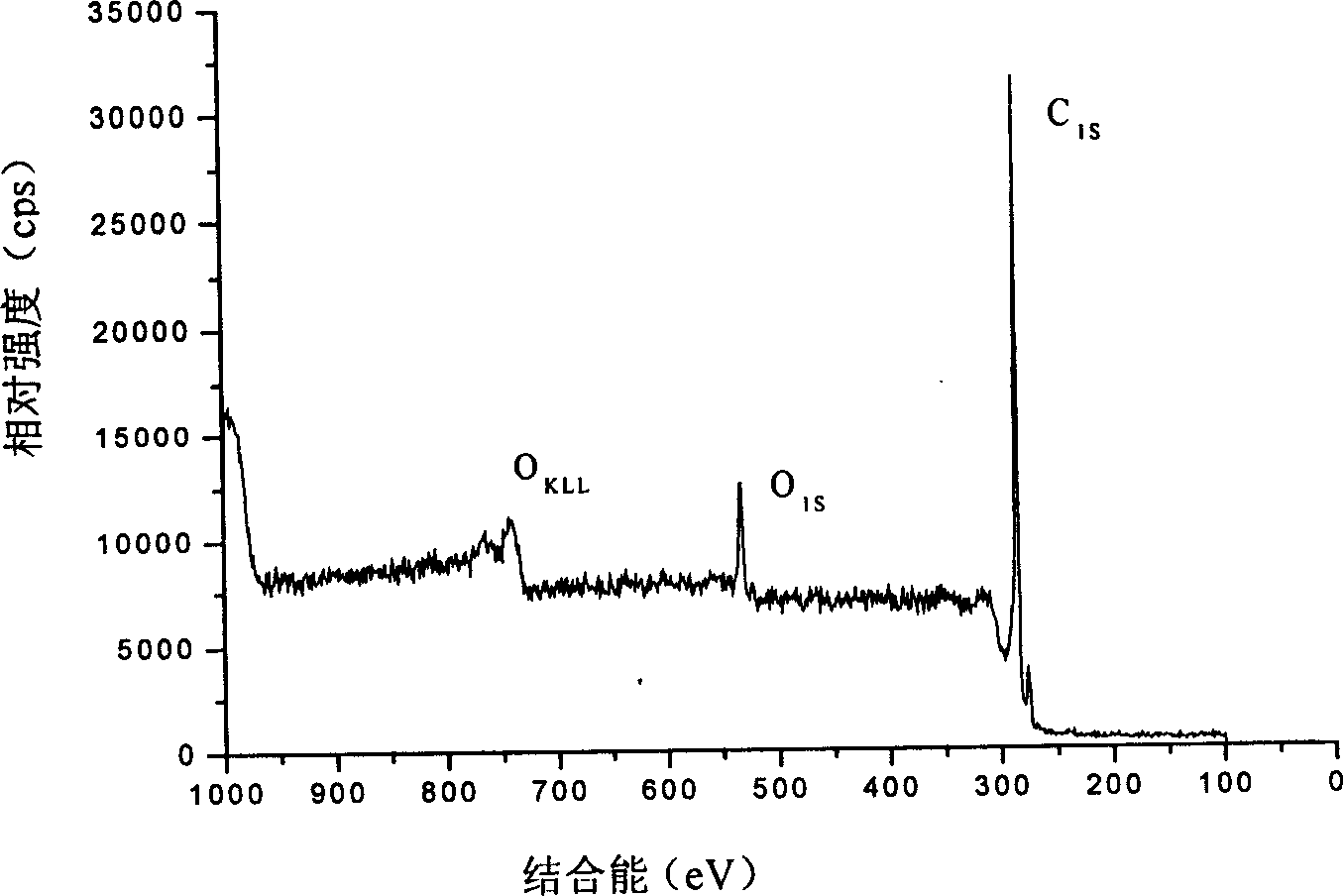Process for preparing multifunctional carbon nanotube for epoxy resin nano composites
A technology of nanocomposite materials and carbon nanotubes, which is applied in the field of nanomaterials, can solve problems such as lack of uniform dispersion at the nanoscale, low two-phase interface strength, and lack of chemical bonds, so as to facilitate industrial applications, improve processability, The effect of the simple and easy preparation method
- Summary
- Abstract
- Description
- Claims
- Application Information
AI Technical Summary
Problems solved by technology
Method used
Image
Examples
Embodiment 1
[0022] Example 1: Multi-walled carbon nanotubes (OD<8nm) prepared by chemical vapor deposition are used as the initial raw material. After purification, acidification, and acyl chlorination, after being connected with dodecyl diamine, the surface containing dodecane Amine-grafted carbon nanotubes.
[0023] Step (1): In a 250ml single-necked round-bottomed flask equipped with mechanical stirring, add 2g of multi-walled carbon nanotube raw material and 100mL, 20% weight concentration nitric acid solution, process under 40kHz ultrasonic waves for 24 hours, then heat to 50 ℃, reacted for 30 hours, filtered with 0.45 μm polytetrafluoroethylene microfiltration membrane, washed 3-6 times with deionized water until neutral, and vacuum dried at 80℃ for 24 hours to obtain purified carbon nanotubes;
[0024] Step (2): In the 250mL single-necked round-bottomed flask equipped with a magnetic stirring rotor, add the purified carbon nanotube raw material 2g and 100mL obtained in step (1), 60...
Embodiment 2
[0029] Example 2: The single-walled carbon nanotube (OD<8nm) prepared by the arc discharge method is used as the initial raw material, and after purification, acidification, and acid chloride, N,N-dimethyldipropyltriamine is connected to obtain Grafted single-walled carbon nanotubes with amino groups on the surface.
[0030] Step (1): In a 250ml single-necked round-bottomed flask equipped with mechanical stirring, add 1g of single-walled carbon nanotube raw material and 200mL of sulfuric acid with a concentration of 30% by weight, use 80kHz ultrasonic treatment for 12 hours, and then heat to 80°C , reacted for 10 hours, filtered with a 0.45 μm polyvinylidene fluoride microfiltration membrane, washed repeatedly with deionized water until neutral, and vacuum dried at 100°C for 18 hours to obtain purified carbon nanotubes;
[0031] Step (2): In the 250mL single-necked round-bottomed flask equipped with a magnetic stirring rotor, add 1.5g and 150ml of the purified carbon nanotube ...
Embodiment 3
[0035] Example 3: Multi-walled carbon nanotubes (OD<8nm) prepared by laser evaporation as the initial raw material, after purification, acidification, and acyl chlorination, are connected with dodecyl diamine to obtain a bond with amino groups on the surface. branched multi-walled carbon nanotubes.
[0036] Step (1): In a 250ml single-neck round bottom flask equipped with mechanical stirring, add 1g of multi-walled carbon nanotube raw material and 100mL of 20% weight concentration sulfuric acid solution, use 80kHz ultrasonic treatment for 10 hours, then heat and heat at 80-90 Stir and reflux at ℃, react for 10 hours, filter with 0.45 μm polytetrafluoroethylene microfiltration membrane, wash repeatedly with deionized water 3-5 times until neutral, and dry under vacuum at 100 ℃ for 24 hours to obtain purified carbon nanotubes ;
[0037] Step (2): In a 250mL single-necked round bottom flask equipped with a magnetic stirring rotor, add 2g of purified carbon nanotube raw material ...
PUM
 Login to View More
Login to View More Abstract
Description
Claims
Application Information
 Login to View More
Login to View More - R&D
- Intellectual Property
- Life Sciences
- Materials
- Tech Scout
- Unparalleled Data Quality
- Higher Quality Content
- 60% Fewer Hallucinations
Browse by: Latest US Patents, China's latest patents, Technical Efficacy Thesaurus, Application Domain, Technology Topic, Popular Technical Reports.
© 2025 PatSnap. All rights reserved.Legal|Privacy policy|Modern Slavery Act Transparency Statement|Sitemap|About US| Contact US: help@patsnap.com


